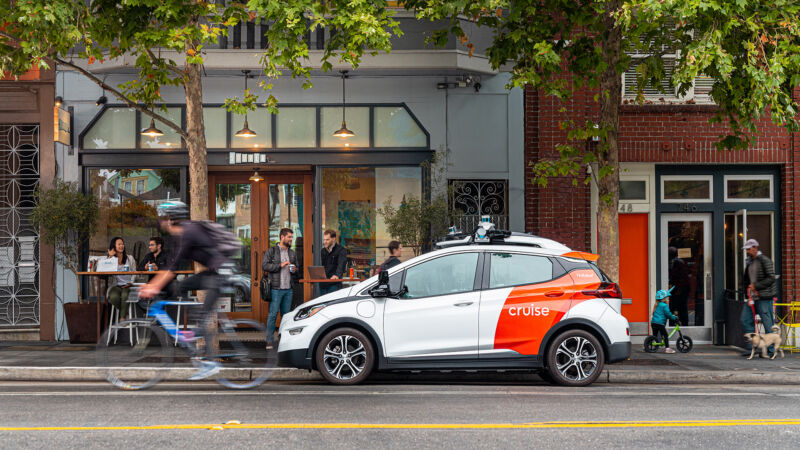Any example?
This one for example seems to work ok:
Returns:
Enlarge / Cruise's driverless Bolt EVs are a common sight in San Francisco. A video showing a driverless car being stopped by the police and then attempting to drive away went viral over the weekend. San Francisco police stopped one of Cruise's autonomous Chevrolet Bolt EVs, likely because the car's headlights were not on despite it being night. In the video, first posted to Instagram on April 2, an officer can be heard saying, "There's nobody in it."
But a few seconds later, after the officer walks back to his police car, the autonomous vehicle—perhaps deciding that the traffic stop was over—tries to drive away before pulling over to a stop a few hundred feet away.
Cruise says that the car wasn't trying to make a run for it. The vehicle first yielded to the police vehicle, then pulled over to a safe spot for the actual traffic stop, the company says. One of the police officers contacted Cruise to inform it of the situation, and the driverless car did not receive a ticket. Cruise says it has fixed whatever caused the car to drive without its headlights at night. Advertisement This is not the first time that a driverless car has been stopped by the police. Way back in 2015, when it was still just the Google Self-Driving Car Project and not Waymo, a Google self-driving car was stopped in Mountain View, California, for going just 24 mph (39 km/h) in a 35 mph (56 km/h) zone. On that occasion, no ticket was issued, as the officer decided that no law had been broken.
In 2019, a police officer in Providence, Rhode Island, pulled over one of May Mobility's low-speed autonomous shuttles. The six-person shuttles run a 12-stop urban loop to and from a train station, but on the first day of operations, one was stopped by an officer who was unfamiliar with the vehicle. No charges resulted from that interaction, either.
Also in 2019, a driverless Tesla was stopped after its owner used the car's remote summon feature in Florida. However, in that case, the incident was staged by a YouTuber.
Autonomous vehicle developers like Cruise and Waymo have prepared guides for first responders on how to interact with the vehicles in case of emergencies.Unless a newline is expected between those paragraphs?


When you use the fetch endpoint for parsing news articles, the returned text is a single big block of text.